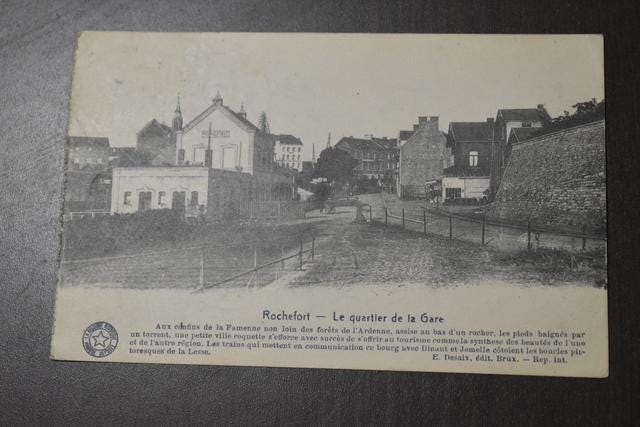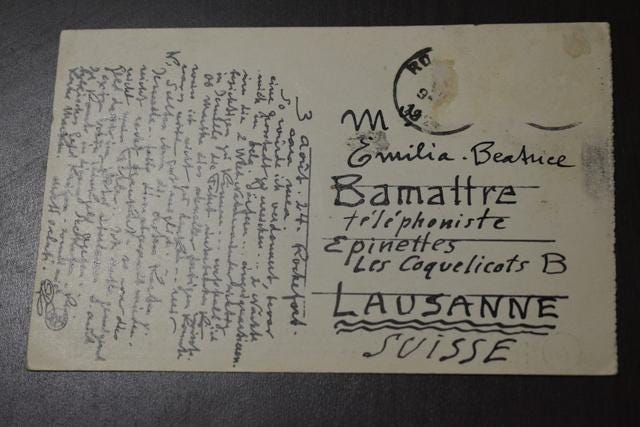- Accepts Etsy gift cards
Original Historical French Vintage Postcard Rochefort Quartier de la Gare – World War I, old postcard, wartime, collector's card
$420.84
Old postcard Rochefort le Quartier de la gare year 1916 AK is used but in a very good condition (on the back no stamp present)
Reflective essay on a historical postcard from 1916: Rochefort – Le Quartier de La Gare*
Examining historical postcards not only offers a visual glimpse into bygone times, but also opens windows into the social, political, and cultural contexts in which they were created. A particular postcard from 1916, depicting Rochefort in the Quartier de La Gare, is a fascinating document that transports the viewer back to the time of the First World War. This postcard is more than a simple image; it is a testimony to the reality of that time and the possible emotions that moved people at that time.
Rochefort, a city on the French Atlantic coast, was strategically important during the First World War. The Quartier de La Gare district, the classic urban transportation hub, is vividly depicted on the map. The construction and maintenance of train stations was essential for the mobilization of troops and equipment. The map not only shows the architectural elements but also a clear connection to everyday wartime life. The train stations were often a meeting place for soldiers heading to the front or returning home, as well as for their families worried about their loved ones.
The use of color printing on the postcard expresses the spirit of the times. The colors were carefully chosen and conveyed a certain vibrancy that contrasts with the grim reality of war. One could argue that the vivid depictions of Rochefort also offer a kind of escape from the oppressive reality of war, a reminder that life goes on despite the conflict. The postcard may have provided comfort by depicting familiar everyday life, such as passersby, moving trains, or the surrounding architecture.
Furthermore, the question arises as to how such maps were perceived after the war. During the war, many people were disillusioned, and the loss of life and the destruction of home and security shaped the collective memory. A map like this likely acquired a nostalgic value and became a symbol of a lost time. One might assume that with every glance at the map, one was reveling in memories while simultaneously experiencing the loss and injustice of the war years.
Analyzing the map also encourages an exploration of historical memory itself. How do societies preserve their memories of dark times? How is the image of the past shaped by artifacts like this map? It invites the viewer to reflect—both on the observed image and the time in which it was produced. What stories lie behind the depicted scenes? What emotions were captured, and which remain unspoken?
In summary, this historic postcard of Rochefort, Le Quartier de La Gare, is far more than just a work of art; it is a key to the experiences and emotions of a generation living under the influence of the First World War. Reflecting on the image allows us to better understand the complexity of human experience in the context of war, memory, and identity. Such artifacts invite us to learn across time and appreciate the significant stories they convey.

